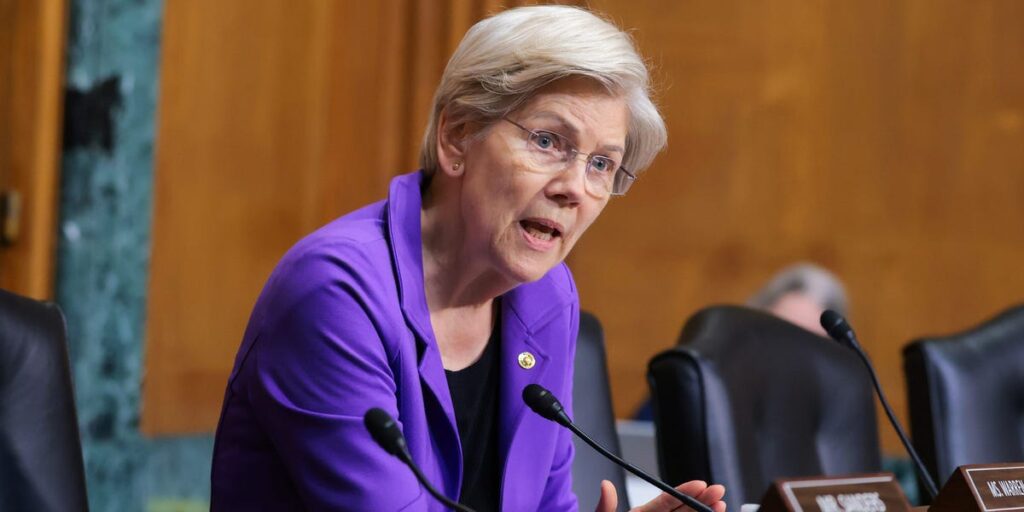From higher student-loan balances to lower college attendance, education groups have a list of concerns with President Donald Trump’s plans to dismantle the Department of Education.
Sen. Elizabeth Warren released a report on Thursday — exclusively viewed by Business Insider — compiling responses she received from 11 national organizations regarding the impact of Trump’s education plans on students and borrowers.
The fate of student-loan borrowers was among the groups’ top concerns. The Supreme Court recently ruled that the Department of Education’s plan to lay off nearly 1,400 of its employees can proceed, meaning that the Federal Student Aid office — which the report said administers over $120 billion in grants and student loans annually — would lose staff.
The American Council on Education told Warren that “delayed funding, especially in the instances of student financial aid, can result in the inability of students to enroll for classes and persist through to completion in a timely fashion, causing them to take on more student loan debt to complete their degrees.”
Delays in receiving federal student aid could also lead some students to turn to private lenders; the NEA said that private student loans often have riskier terms and can lead to predatory lending. They might be the only route students have if they cannot receive federal student loans promptly.
This report comes amid a summer of changes for student-loan borrowers and education overall. The administration announced in April that it was restarting collections on defaulted student loans after a five-year pause. Interest charges resumed on 8 million borrowers’ balances on August 1 after a year on pause, and Trump’s spending bill, which he signed into law on July 4, codified significant changes to the repayment system.
Specifically, the bill included a $200,000 lifetime cap on borrowing for professional students, like those seeking medical or law school. Average tuition is higher than that cap, and education analysts previously told BI that the cap could either turn students to private lending or lead them to forgo their advanced degrees altogether.
The spending law also eliminated existing income-driven repayment plans, include the SAVE plan, and replaced them with two options: a standard repayment plan and a new Repayment Assistance Plan, which allows borrowers to make payments based on their income with forgiveness after 30 years.
Some of the organizations said in the report that the new repayment plans could leave borrowers with higher monthly payments, and minimal staffing at Federal Student Aid will exacerbate the challenges of attaining affordable payments.
In addition to repayment changes, the report also highlighted Trump’s intent to transfer the facilitation of student loans from the Department of Education to another federal agency. While that hasn’t yet happened, advocacy group Student Borrower Protection Center told Warren that moving “the student loan program at a time when borrowers are facing such significant borrower distress risks exacerbating the confusion and instability borrowers are already experiencing and risks even more borrowers falling through the cracks.”
Trump’s efforts to dismantle the Department of Education have been in action for months. In February, the administration cut more than $900 million in research contracts, which department employees previously told BI would stifle data collection and jeopardize funding for low-income schools.
Linda McMahon, Trump’s education secretary, has previously acknowledged that she cannot eliminate the Department of Education without congressional approval. She has supported slashing the department’s workforce, though, saying in a statement following the Supreme Court’s ruling that the cuts will move forward “to promote efficiency and accountability and to ensure resources are directed where they matter most — to students, parents, and teachers.”
Read the full article here
















